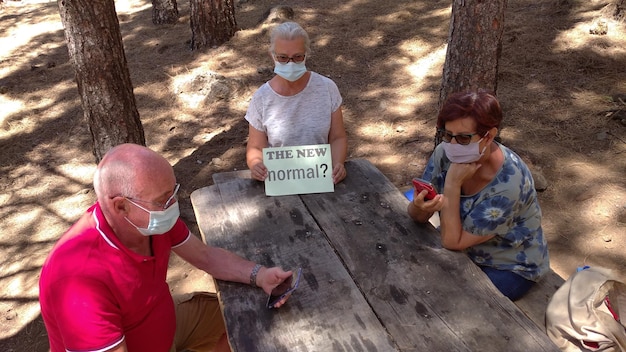International Aid Organizations: Structures & Effectiveness in the US

International Aid Organizations in the US utilize diverse organizational structures, impacting their effectiveness; this article compares these structures, analyzing their strengths and weaknesses in delivering aid.
Navigating the complex world of international aid organizations requires understanding their structures and effectiveness in the US. This guide provides a detailed comparison to help you understand how these organizations operate and achieve their goals.
Understanding International Aid Organizations
International aid organizations play a crucial role in addressing global challenges, including poverty, disasters, and health crises. These organizations operate with various structures, influencing their ability to deliver aid effectively in different contexts, including the United States.
Understanding these structures is essential for anyone interested in supporting or partnering with these organizations. Different structures have different strengths and weaknesses, affecting their efficiency, accountability, and overall impact.
What are International Aid Organizations?
International aid organizations are entities that provide assistance to countries and communities in need. This assistance can take many forms, including disaster relief, medical aid, educational support, and economic development programs.
These organizations often operate independently of governments, relying on donations, grants, and other forms of funding. However, they may also collaborate with government agencies and other organizations to achieve their goals.
- Disaster Relief: Providing immediate assistance and support to communities affected by natural disasters, such as earthquakes, hurricanes, and floods.
- Medical Aid: Delivering healthcare services and medical supplies to areas with limited access to medical care.
- Educational Support: Implementing programs to improve access to education and vocational training.
- Economic Development: Supporting projects that promote sustainable economic growth and improve living standards.
In summary, International aid organizations are vital in providing a multitude of services to communities in need.

Types of Organizational Structures
The organizational structure of an international aid organization significantly impacts its operational efficiency and effectiveness. Understanding these structures can help donors and stakeholders evaluate the organization’s ability to achieve its mission.
There are several common organizational structures, including hierarchical, network-based, and hybrid models. Each has its advantages and disadvantages, affecting how the organization operates and achieves its goals.
Hierarchical Structures
Hierarchical structures are characterized by a clear chain of command, with authority flowing from the top down. This structure is often used by larger, more established organizations with a centralized decision-making process.
Advantages of hierarchical structures include clear lines of authority, efficient decision-making, and standardized procedures. However, they can also be rigid, slow to adapt to change, and less responsive to local needs.
Network-Based Structures
Network-based structures rely on partnerships and collaborations with other organizations and individuals. This structure allows for greater flexibility and adaptability, as well as access to a wider range of resources and expertise.
Advantages of network-based structures include greater responsiveness, flexibility, and innovation. However, they can also be more challenging to manage, with less clear lines of authority and accountability.
- Flexibility: Ability to quickly adapt to changing circumstances and local needs.
- Collaboration: Strong partnerships with other organizations and individuals.
- Resource Sharing: Access to a wider range of resources and expertise.
To conclude, network-based structures thrive on the collaboration of multiple parties, as well as flexibility.
Effectiveness in the US Context
The effectiveness of international aid organizations in the US depends on their ability to adapt to the unique challenges and opportunities presented by the local context. This includes understanding the local culture, legal framework, and political environment.
Several factors influence the effectiveness of these organizations, including their ability to build trust with local communities, coordinate with government agencies, and measure their impact.
Building Trust with Local Communities
Building trust with local communities is essential for the success of any international aid organization. This requires a deep understanding of the local culture, as well as a commitment to transparency and accountability.
Organizations that prioritize community engagement and participation are more likely to build trust and achieve sustainable outcomes. This includes involving local leaders in decision-making processes and tailoring programs to meet the specific needs of the community.
Measuring Impact
Measuring the impact of international aid programs is essential for ensuring accountability and demonstrating the value of the organization’s work. This requires establishing clear goals and objectives, as well as collecting data to track progress over time.
Organizations can use a variety of methods to measure their impact, including surveys, interviews, focus groups, and case studies. It is important to use a combination of quantitative and qualitative data to gain a comprehensive understanding of the program’s effects.

Challenges and Opportunities
International aid organizations face a variety of challenges and opportunities when operating in the US. These challenges include navigating complex regulatory frameworks, securing funding, and coordinating with other organizations.
However, there are also significant opportunities for these organizations to make a positive impact on the lives of vulnerable populations. These opportunities include addressing unmet needs, promoting innovation, and building capacity within local communities.
Regulatory Frameworks
Navigating the complex regulatory frameworks in the US can be a significant challenge for international aid organizations. This includes complying with federal, state, and local laws and regulations related to taxation, employment, and fundraising.
Organizations must also adhere to strict reporting requirements and transparency standards. Failure to comply with these regulations can result in fines, penalties, and damage to the organization’s reputation.
Funding and Resources
Securing adequate funding and resources is essential for the sustainability of international aid organizations. This requires developing a diversified funding strategy, including individual donations, corporate sponsorships, and government grants.
Organizations must also manage their resources effectively to maximize their impact. This includes minimizing overhead costs, investing in staff training, and using technology to improve efficiency.
Case Studies of Effective Organizations
Examining case studies of effective international aid organizations can provide valuable insights into best practices and strategies for success. These case studies highlight the importance of strong leadership, clear goals, and a commitment to innovation.
Several organizations have demonstrated exceptional effectiveness in delivering aid and achieving their missions. These organizations serve as models for others in the field, demonstrating the impact that can be achieved through strategic planning and effective execution.
Case Study 1: Organization A
Organization A is a leading international aid organization focused on providing disaster relief and humanitarian assistance. The organization has a strong track record of responding quickly and effectively to natural disasters around the world.
Organization A attributes its success to its decentralized decision-making process, which allows it to respond quickly to changing circumstances. The organization also invests heavily in staff training and technology to improve its efficiency and effectiveness.
Case Study 2: Organization B
Organization B is an international aid organization focused on promoting sustainable economic development. The organization works in partnership with local communities to implement projects that improve living standards and create economic opportunities.
Organization B attributes its success to its community-driven approach, which ensures that projects are tailored to meet the specific needs of the local population. The organization also invests in capacity building to empower local communities to take ownership of their development.
- Strong Leadership: Having leaders who can make decisions quickly.
- Appropriation: Tailoring projects for the local community.
- Capacity Building: Investing in people to take ownership over their development.
The Future of International Aid in the US
The future of international aid in the US is likely to be shaped by several factors, including changing global challenges, technological advancements, and evolving donor preferences. Organizations that can adapt to these changes will be best positioned to succeed.
Several trends are expected to influence the future of international aid, including increased collaboration, greater use of technology, and a greater focus on sustainability.
Increased Collaboration
Increased collaboration among international aid organizations, government agencies, and private sector partners is essential for addressing complex global challenges. This requires building trust, sharing resources, and coordinating efforts to maximize impact.
Collaboration can take many forms, including joint programs, shared resources, and coordinated advocacy efforts. By working together, organizations can achieve more than they could alone.
Greater Use of Technology
Technology is playing an increasingly important role in international aid, enabling organizations to reach more people, deliver aid more efficiently, and measure their impact more accurately. This includes using mobile technology, data analytics, and social media to improve program delivery and communication.
Organizations that embrace technology are better positioned to respond to emergencies, track progress, and adapt to changing circumstances. Technology can also help to increase transparency and accountability, by providing donors with real-time information about the organization’s work.
| Key Point | Brief Description |
|---|---|
| 🌍 Organizational Structures | Hierarchical, network-based, and hybrid models impact aid delivery. |
| 🤝 Building Trust | Essential through community engagement and transparency. |
| 📊 Measuring Impact | Ensures accountability and demonstrates program value. |
| 🚀 Future Trends | Collaboration, technology, and sustainability are key. |
Frequently Asked Questions
▼
The primary goals include providing humanitarian assistance, promoting economic development, and supporting social programs to improve the quality of life in recipient countries.
▼
Effectiveness is often measured through indicators such as the number of people reached, improvements in health or education, and the sustainability of implemented programs.
▼
Funding typically comes from individual donations, corporate sponsorships, government grants, and partnerships with other non-profit organizations. Diversifying funding sources is crucial.
▼
Challenges include navigating complex regulatory frameworks, securing consistent funding, and ensuring cultural sensitivity and community engagement in their programs.
▼
Individuals can support by donating money, volunteering time, advocating for policies, and raising awareness about the organizations and their missions within their communities.
Conclusion
In conclusion, understanding the organizational structures and effectiveness of international aid organizations is critical for donors, stakeholders, and anyone interested in supporting these vital efforts. By comparing different structures and examining case studies, we can identify best practices and strategies for maximizing impact and improving the lives of vulnerable populations in the US and around the world.





